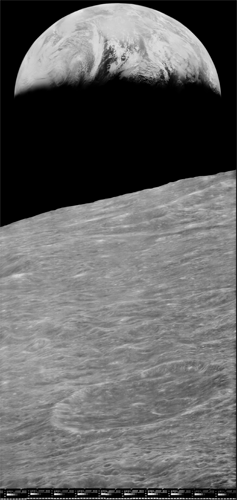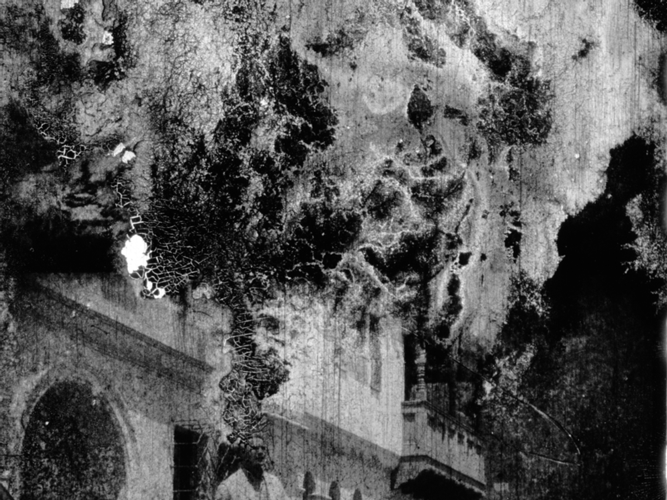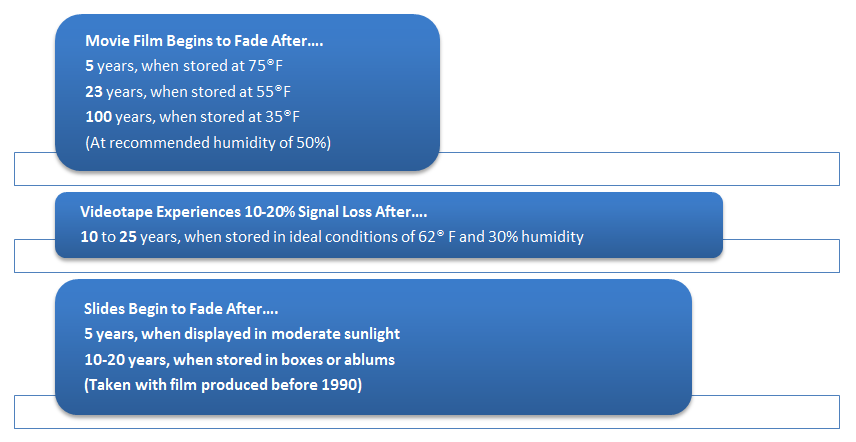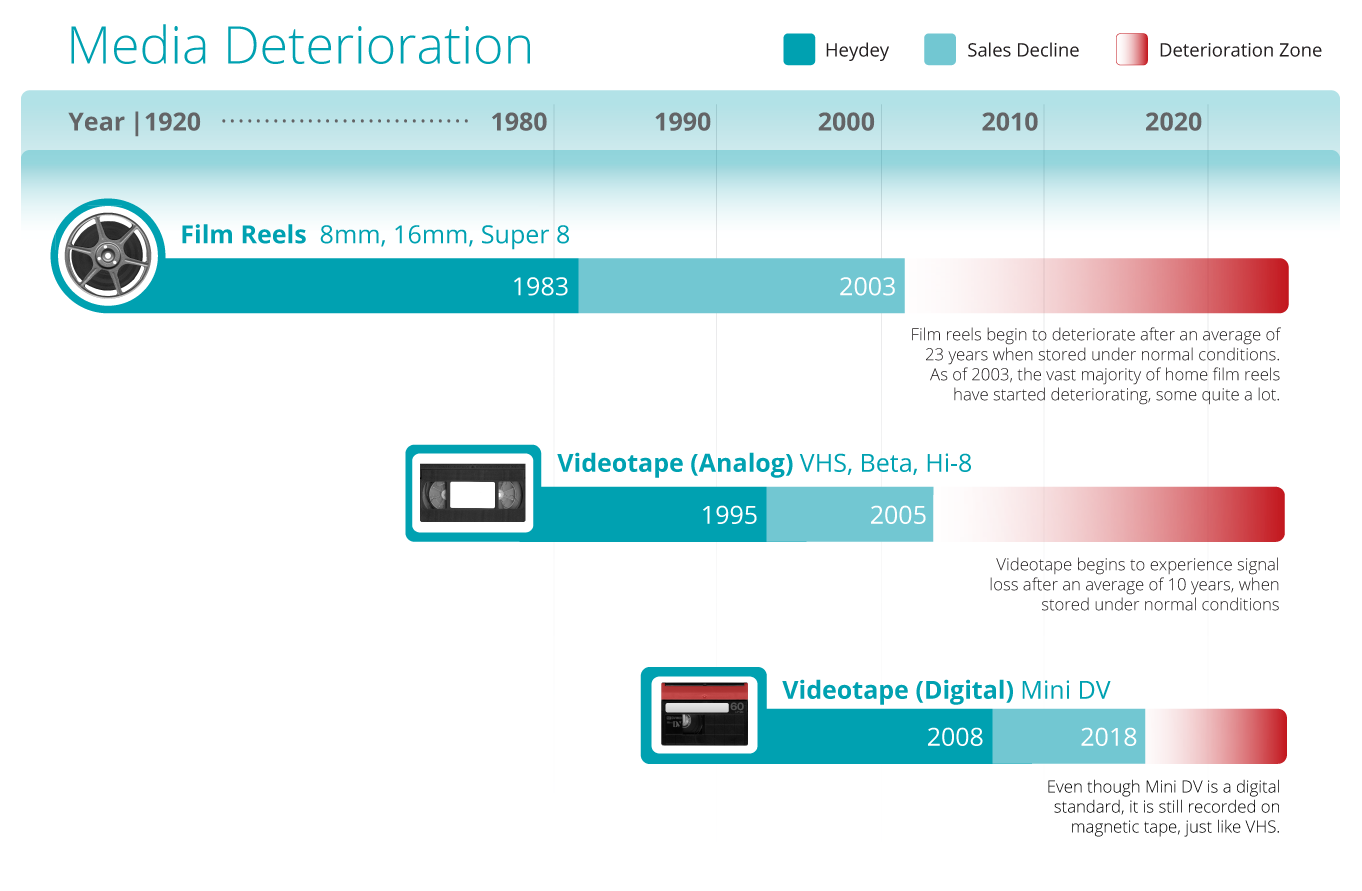By Michael Chang, CEO of YesVideo
Guest post published on Forbes.com
Every day, our memories captured on film, videotape and photographs are decaying – and even NASA has had to find a way to deal with it.
Between 1966 and 1967 NASA sent five Lunar Orbiter spacecraft to the moon to capture images before the arrival of Apollo 11 on July 20, 1969. Forty years later, while preparing for the historic anniversary, NASA began a frantic search for these images after a well-publicized loss of the original video of the Apollo 11 landing.

Figure 1 Image courtesy NASA/LOIRP
Fortunately, the Lunar Orbiter tapes were found. Because the tape players hadn’t been manufactured since 1975, it took a multi-year effort to refurbish a player in order to read the obsolete tapes. The results were stunning images at digital resolutions never seen before.
Unfortunately, many of the most valuable images, including the Apollo 11 landing site, had degraded beyond repair, likely due to the normal but damaging process of pausing, rewinding and playing again and again.
Rocket scientists aren’t the only ones facing the decay of irreplaceable video and images. A significant portion of classic Hollywood movies shot on 35mm film have either completely or partially decayed. Steven Spielberg led a movement for film preservation in the 1980s and 1990s after viewing the original master of his film Jaws and finding that it had deteriorated badly only 15 years after filming.
But the greatest threat lies much closer to home – the deterioration of our own home film reels, videotapes and photographs.
A brief history of home movies
Home movie recording began in 1923 when Kodak introduced 16mm film, an inexpensive alternative to the 35mm Hollywood format. Not until 1932, with the introduction of the smaller and cheaper 8mm format, did DIY movie recording start to take off. For the next 50 years, film was the only way to record first steps, birthdays, graduations, and other important moments in life.
In 1976 a cheaper and reusable new invention revolutionized the home movie industry – the videocassette tape. The first camcorder hit the market in 1983, and cassette tapes soon evolved from analogue (VHS, Beta) to digital (MiniDV). For the next 30 years, videotapes were the dominant standard; only recently has the technology been replaced by memory cards and hard disc drives.
The problem
Film and videotapes were never made to last for generations. Film typically undergoes a change in color as it ages. The cyan, magenta and yellow dyes in film decay at different rates resulting in one predominately saturated color (often red). Static lines can appear with age.

Nitrate degradation, courtesy Wikipedia (http://en.wikipedia.org/wiki/File:Nitratedecomp.png)
In certain circumstances, moisture and higher temperatures can cause a reaction called “vinegar syndrome” that can warp and decay film significantly. It’s difficult to predict how long this might take because it’s highly dependent on how your film is stored (see graph). Even stored under optimal conditions your film will slowly fade in picture quality and color.
Even though videotape is a newer format, its shelf life is quite a bit less than film. Because videotape uses magnetic tape, which binds a magnetized coating onto a strip of plastic, it deteriorates over time as the coating wears and the plastic separates. (Sometimes you can hear this when your videotape sticks or squeals). In fact, every time you play, pause, fast-forward or rewind, you cause it to deteriorate. This can result in faded color, blurring, and static, which eventually lead to complete degradation. Multiple factors can affect videotape lifespan but the biggest are humidity and temperature (see graph).
Home movies are not the only casualties of time-related degradation. Ordinary photographs are also vulnerable. The fact that photos deteriorate over time is no surprise; we’ve all seen faded images of our grandparents with bleached-looking flesh and reddish hair. And even when stored in dark conditions, photographs will fade – it’s just a matter of time. Images taken before color dyes were improved in 1990 can fade quite quickly (see graph).

Source: Wilhelm & Brower, 1993.
The solution
It’s difficult to predict exactly when, but there’s no question that your film, videotape and photographs will decay over time. At some point when you pull out your childhood photos, or attempt to watch your honeymoon videos, you will see that the colors are no longer as brilliant as you remember them. And if you procrastinate, those remaining colors will fade further, or even degrade entirely.
80 years of filmed home movies and color photography plus another 30 years of videotape adds up to a staggering number of recorded weddings, school plays, and holiday get-togethers. All of these were events that had emotional significance and were lovingly documented by the best means possible at the time. Although the original technologies are now obsolete, these decaying films and videos can still be saved. New techniques allow old photographs, film and video to be digitally restored and transferred either to DVD or even to the cloud, bringing new life to memories for generations to come. There is nothing like the thrill of finding your parents’ 8mm childhood films and being able to watch them for the first time in all their original glorious color.
To preserve the original quality, the earlier you take action the better. Many national retail / drugstore chains offer video transfer services and there are also several choices available online, as well as do-it-yourself software. You don’t need to be a rocket scientist or a Hollywood director to digitize your video and images, but it does take expert precision and care to restore your memories in the best possible format for viewing and sharing. Take time to research companies that specialize in these transfers and storage, and your children and grandchildren will thank you for it.

 Michael Chang is CEO of YesVideo, the global leader in video transferring and sharing. He is responsible for defining the company’s market vision, and leading his team to continued success by creating innovative products and services for the millions of consumers that YesVideo serves.
Michael Chang is CEO of YesVideo, the global leader in video transferring and sharing. He is responsible for defining the company’s market vision, and leading his team to continued success by creating innovative products and services for the millions of consumers that YesVideo serves.
Previously, Michael cofounded Greystripe, the largest brand focused mobile advertising network, and also served as CEO. ValueClick acquired Greystripe in 2011. Michael also worked at Incubic Venture Capital and was responsible for investments in Internet and software companies. Michael holds an MBA from Duke University’s Fuqua School of Business and a BS in EE from Carnegie Mellon University.




